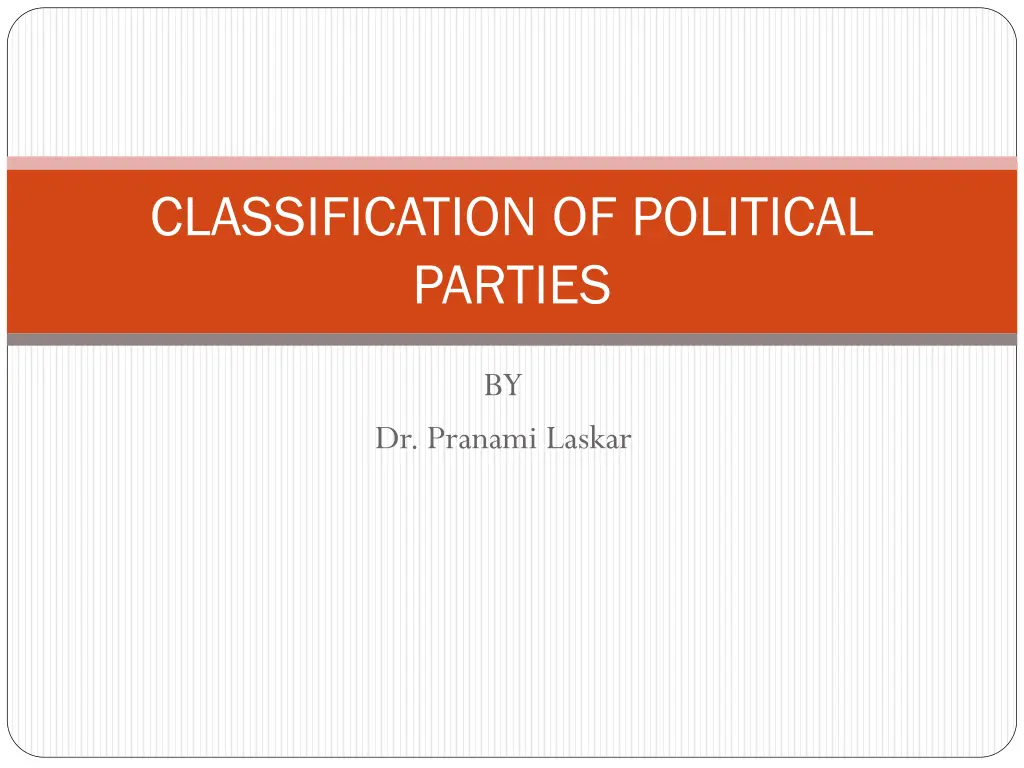
Political Parties Classification and Systems Overview
Explore the classification of political parties by Dr. Pranami Laskar, including elitist and mass parties. Learn about advantages and disadvantages of one-party, two-party, and multi-party systems, helping you understand the dynamics of different political structures.
Download Presentation

Please find below an Image/Link to download the presentation.
The content on the website is provided AS IS for your information and personal use only. It may not be sold, licensed, or shared on other websites without obtaining consent from the author. If you encounter any issues during the download, it is possible that the publisher has removed the file from their server.
You are allowed to download the files provided on this website for personal or commercial use, subject to the condition that they are used lawfully. All files are the property of their respective owners.
The content on the website is provided AS IS for your information and personal use only. It may not be sold, licensed, or shared on other websites without obtaining consent from the author.
E N D
Presentation Transcript
CLASSIFICATION OF POLITICAL PARTIES BY Dr. Pranami Laskar
CLASSIFICATION: According to Maurice Duverger there are two types of political parties: 1. the Elitist or traditional parties 2. the Mass parties TYPES OF ELITIST PARTIES: 1. the European type The American type
TYPES OF MASS PARTIES: 1. Socialist parties Communist parties Fascist parties Intermediate type parties: Indirect parties Parties in developing countries
ADVANTAGES OF ONE- PARTY SYSTEM: Politically stable government Ensures national integration Ensures continuous economic development Allows for speedy decision making It is not divisive Useful in times of emergencies
DISADVANTAGES: It is undemocratic It can degenerate into a dictatorship Encourages subversive elements May exclude some experienced politicians Tends to be corrupt May lead to apathy
ADVANTAGES OF TWO PARTY SYSTEM: Political information is much easier to understand Balance is achieved because multiple interests and opinions are accommodated Political stability is achieved Governing them is much more simpler There are fewer voting choices
DISADVANTAGES: It brings government to a standstill It offers limited options It promotes corruption It ignores alternative voices
ADVANTAGES OF MULTI PARTY SYSTEM: It is democratic Ensures peaceful change of power Caters for the minority Allows for opposition Permits mass political participation Prevents tyranny
DISADVANTAGES: Expensive to operate It is divisive Provides too many choices Results in coalition government Stifles continuity
